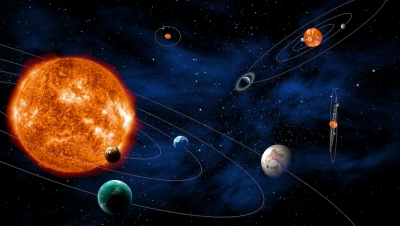
An exoplanet is any planet beyond our solar system. Most orbit other stars, but free-floating exoplanets, called rogue planets, orbit the galactic center and are untethered to any star.
Planets are much fainter than the stars they orbit. Hence, exoplanets are extremely difficult to detect. By far, the most successful technique for finding and studying exoplanets has been the radial velocity method, which measures the motion of host stars in response to gravitational tugs by their planets. Swiss astronomers Michel Mayor and Didier Queloz discovered the first planet using this technique, 51 Pegasi b, in the 1990s. Other techniques that have detected exoplanets are – pulsation timing, microlensing, and direct imaging.
The nearest exoplanets are located 4.2 light-years from Earth and orbit Proxima Centauri, the closest star to the Sun.
In 2011 the Kepler said that they had discovered a planet, Kepler-22b, that was the first to be found in the habitable zone of a star like the Sun. They also discovered the first Earth-sized exoplanets, Kepler-20e and Kepler-20f. By the end of its mission in 2018, Kepler had discovered 2,741 planets, about two-thirds of all known exoplanets.
Credit : Business Standard
Picture Credit : Google




